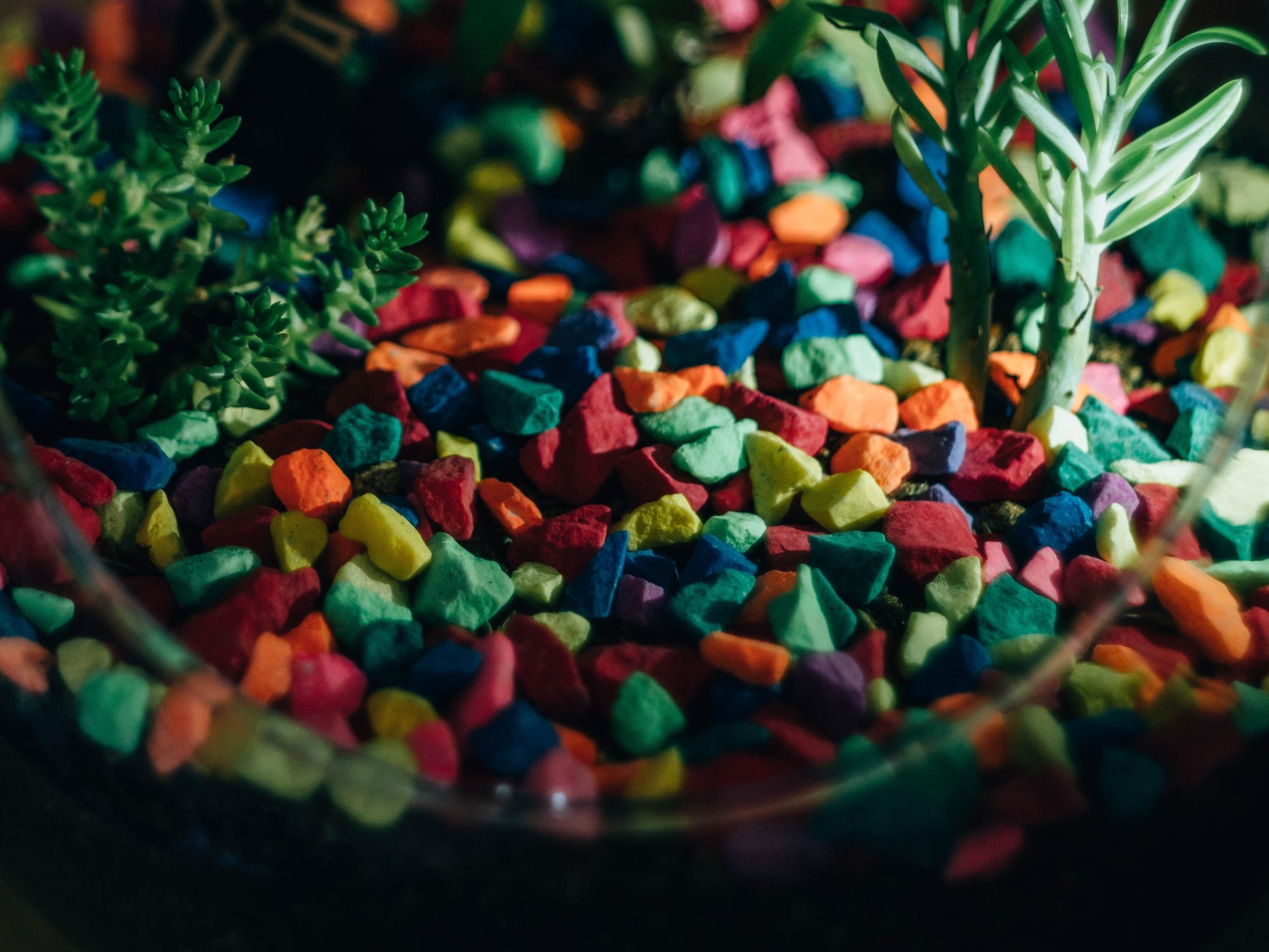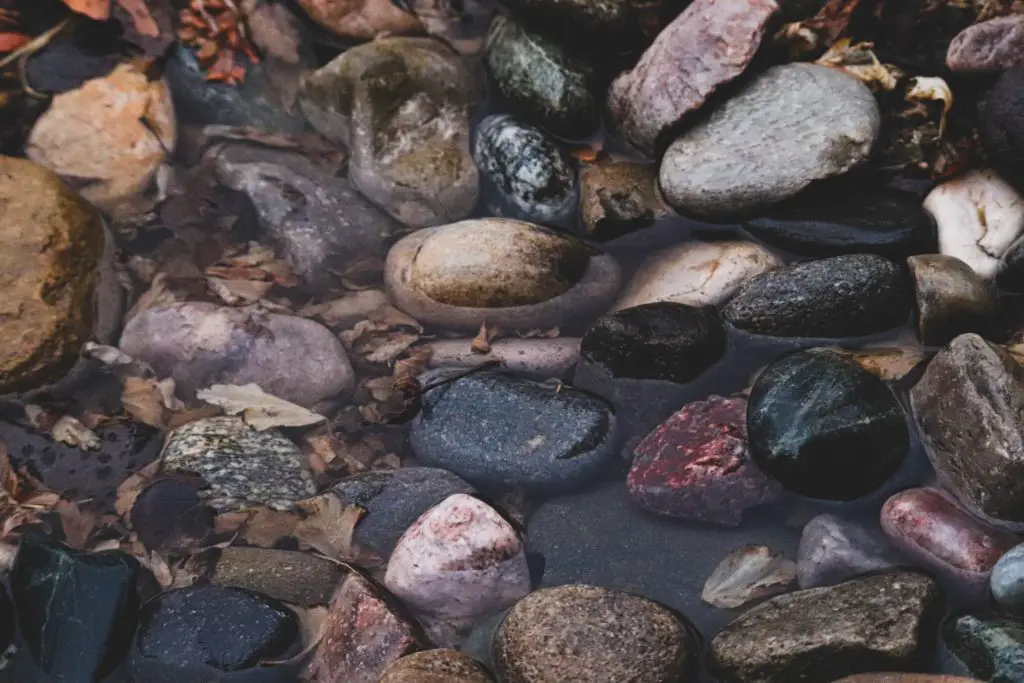Cleaning aquarium rocks is a tedious and messy task that no one wants to do. However, if you want your River Tank looking its best, it needs to be done periodically. Also,I think it is much easier than a tank that is full to the top with water. River Tanks have their advantages.
Cleaning the rocks in a River Tank doesn’t have to be complicated or time-consuming though – there are many ways to clean them with minimal effort on your part. In this blog post, we will show you how.
How to Clean Aquarium Rocks: A Comprehensive Guide
Enlist the help of a friend or family member
You will need help, so you might want to ask someone to help you.

Wash your hands thoroughly before starting
Fish are delicate animals. Any harmful bacteria on your hands can kill them. So you want to make sure your hands are clean and the tank is as bacteria-free as possible before you begin. Clean your hands thoroughly before you get started.
First, remove the rocks from the tank.
Grab them with your gloved hands and take them out of the water. Be careful not to submerge any part of your body in water as this can increase bacteria levels. Take care when removing rocks not to touch each other or anything else – for example, a dirty floor. This may introduce more dirt into those surfaces where there was none before.
Remove and Replace any rocks that have lost their surfaces or structures.
When cleaning aquariums, it’s essential to know which ones need more of a scrub than others. If some pieces from your rocks no longer look like they’re in good condition, remove them! You’ll want to toss these once you’ve finished with the rest of your care routine, so make sure not to accidentally reintroduce those germs back into the fish tank when you put up new decorations.
Soak the rocks in detergent and water first.
Before using your new tool on them, soak the rocks in some solution made by mixing laundry soap with warm tap water until they have dissolved into goop. Let soak for at least five minutes.
Rinse off all dirt, debris, and algae with water before you start cleaning.
You want to make sure that you rinse off all dirt, debris, and algae before going ahead with your new tool. So, be sure to rinse them off with a lot of water.
Scrub with an old toothbrush or scrubbing pad.
Use a small, soft-bristled brush to clean the rocks in your tank with soap and water. You can also use a hard bristle brushing pad if you are careful not to damage them too much. If they are filthy, try soaking them again before this step so that you don’t have as much grime to work through on the rock surface.
I would recommend letting it soak for 24 hours if possible first, though, because anything left off will be easier to remove after sitting overnight/overnight. That said, make sure there’s no chemical residue from the detergent solution by doing a quick rinse beforehand – tap water should do the trick.
Use a razor blade scraper.
Razor blades are perfect for scraping the algae and other gunk off your rocks, so use one if available (or buy one). If not, feel free to substitute with another hard plastic or metal object like an ice scraper from a freezer. The key is that it needs to be stiff and durable enough to scrape without breaking under pressure. Also, make sure it’s clean before beginning – we don’t want any bacteria inside our tank.
Take the time to wipe down any surfaces that may have been exposed to fish droppings or other types of waste.
These surfaces are always at high risk of developing an odor, so be sure to take the time to wipe them down to remove any residue.
Don’t forget about the sandbed!
If there’s a layer of gravel underneath your rocks, then you’ll want to clean that too before putting them back in place. Just make sure it has been rinsed and dried thoroughly first not to introduce new bacteria into your tank. For those with larger tanks, this is easy enough. Just take out the entire rock bed from one side and remove all of the rocks at once (you can put these on some old newspaper or something if they’re large).
However, for smaller aquariums where only portions are taken up by rigid substrate like pebbles/gravel, I would recommend just doing small sections at a time because going through the whole thing could take a while.
Use vinegar to clean rocks and make them shine.
This is a great idea to make the rocks look shiny and new. Simply spray them with a vinegar solution – it only takes one tablespoon of white distilled vinegar to half a gallon of water for this technique to work well at cleaning the rocks.
Rinse! Rinse! Rinse!
Be sure to rinse off any vinegar solution that has contacted the rocks before putting them back in place. Rinsing all the rocks before placing them back into the aquarium is important because:
- Fish tanks can get dirty very quickly, so it’s essential to clean the rocks regularly.
- Your fish will be healthier if you use a cleaner that is safe for them and their environment.
- Rinsing will help make sure you haven’t missed any spots during the cleaning process.
- It’s also important to rinse off any vinegar solution before putting them back in place because otherwise, it can change the pH of your water, and that is bad for your fish.
How to Clean Aquarium Rocks: FAQ
How often should I clean my rocks?
Cleaning your rocks regularly (say, once every few months) will help keep them looking glossy and new. If you find the time to do it more than that, then even better.
What types of cleaning products can I use for this process?
Any type of soap or detergent is fine as long as it’s safe for fish. Vinegar is another great option because it will remove algae and give the rocks a nice shine after rinsing off the vinegar solution with water afterward. Any strong chemicals must be thoroughly rinsed off before putting back into place to avoid any negative effects on pH levels in tank water.
What should I do with all the algae once it’s off of rocks?
The best solution is to dump them in a bucket and discard them. This prevents any potential growths from forming on your aquarium water surface (not good for fish) or anywhere else around the home, so make sure you get rid of them as soon as possible.
How can I prevent my tank from getting dirty quickly?
Keeping up with maintenance by cleaning out debris regularly, ensuring that pumps are sealed properly to avoid leakage into the water, checking filters at least monthly, etc. will help reduce issues related to poor sanitation.






